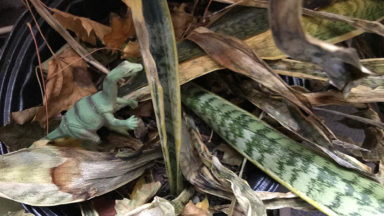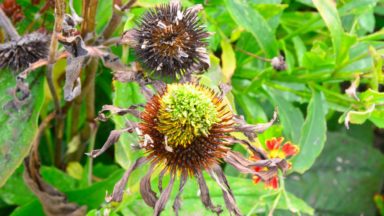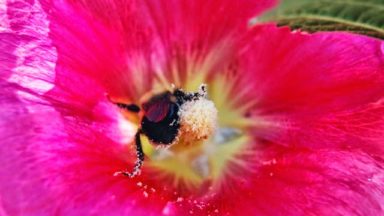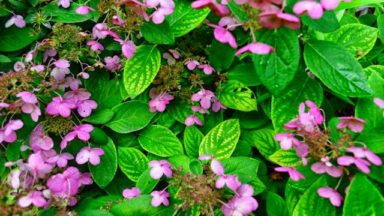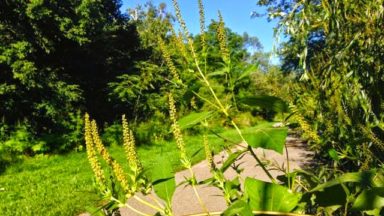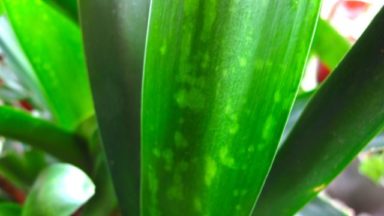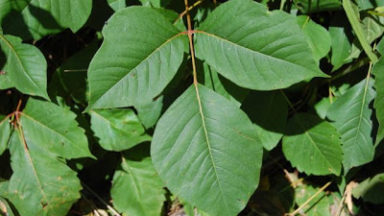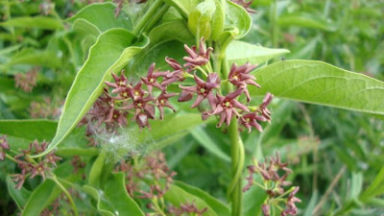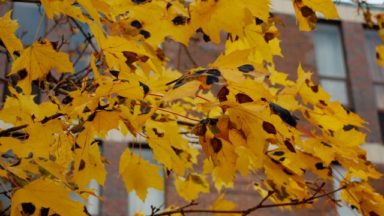Thank you to the academy for this recogn online pharmacy buy propranolol with best prices today in the USA ition. What can I say? I’m one of the best at putting things off, neglecting, and just plain forgetting thi online pharmacy buy levitra oral jelly with best prices today in the USA ngs. Thank you […]
What’s wrong with my ‘Annabelle’ hydrangea?
Last year around this tim buy fildena online waynegeneralhospital.org/home-health/html/fildena.html no prescription pharmacy e (late April or early May) I noticed something strange about the leaves on shoots of my old, reliable ‘Annabelle’ hydrangeas. They looked glued together into a puffy, leaf-shaped balloon. What was wrong? In fact, they were “glued” or rather tightly stitched together at the edges. […]
Coneflower rosette gall mites
The more we plant something, the more something comes along to eat it. Usually something buggy. In the case of coneflowers (Echinacea), this green, tufted centre in the centre of the disk is a sign of some undesirable noshing going on. The culprit is an unnamed type of eriophyid mite, a breed of microscopic, sucking […]
Book Review: The Allergy-Fighting Garden
Not all pollen is alike. Despite its abundance (or in this bee’s case perhaps “a-bum-dance”), Thomas Ogren tells us the pollen of Alcea or hollyhock is a low-allergenic pollen. He warns those sensitive not to sniff it, however. It gets right up your nose. And in your eyes. And down your wheezy throat. Pollen. At […]
Yellow leaves on my hydrangea
Green veins, yellow between them – a symptom of chlorosis It was on a lot of hydrangeas I saw around town this year – yellowing leaves, with the classic green veins that signal chlorosis or lack of chlorophyll. Unsure why this happened more often in 2014, but when it did on my own Hydrangea ‘Quickfire’ […]
What’s making you sneeze? Giant ragweed
These are the insignificant-looking flowers that cause so much misery in late-summer hay-fever season You’re probably blaming the wrong guy. The culprits behind all that sneezing aren’t those pretty yellow flowers in late-summer bloom. They’re ones you might not even pay attention to – despite the fact that one of them grows really, really tall […]
My bargain Clivia might have a virus
These mottled leaves on my Clivia could be telling me a sad, sad story. Oh, dear. You might know of my constant quest for unkillable houseplants. When I find one purported to be Helenproof, I’m on it like bees (or Battersbys) on honey. How thrilled I was to hear about Clivia, an easy-to-care-for flowering bulb […]
Yikes: Dog-vomit fungus on my worm box
The delightfully named “dog vomit fungus”, aka dog vomit slime mold (Fuligo septica) Talk about going from the sublime to the real-ick-ulous on the Toronto Gardens blog! Look what bloomed – overnight – on my worm condo. When I say “overnight,” I mean that the slimy yellow barflike substance frothed up over the lid and […]
Poison Ivy: Better not touch
Poison Ivy (Toxicodendron radicans) – “leaves of three, let it be.” Hiking with Mr. TG last weekend, it became clear that my former- Scoutmaster husband had forgotten what poison ivy (Toxicodendron radicans) looks like. Yikes. And it was everywhere along our path. One study suggests that poison ivy might get itchier and more plentiful in […]
Warning: Dog-Strangling Vine in bloom
The star-shaped brownish-maroon flowers of dog-strangling vine. This picture makes them seem almost pretty. Don’t be taken in. One of Toronto’s worst – if not the very worst – of weeds is now making babies. Millions and millions and millions of them. It’s an ideal time to nip all that fecundity in the bud. Dog-strangling […]
Worth repeating: Black tar spot on maples
We first posted this back in 2009, but 2011’s long, wet spring seems to have been perfect – many of our street trees seem spottier than ever. Here’s a repeat of our original post: Black tar s online pharmacy buy avana with best prices today in the USA pot of maples (Rhytisma acerinum) is one […]
Pear Trellis Rust isn’t pretty
The bright red foliage lesions and bumpy fruiting bodies of Pear Trellis Rust My sister-in-law was showing me the garden of their new home, including a number of fruit trees. Unfortunately, the foliage of the two pear trees ar buy kamagra gold online www.auriculotherapy.org/wp-content/uploads/2024/08/jpg/kamagra-gold.html no prescription pharmacy e covered in red lesions, and the underside […]

